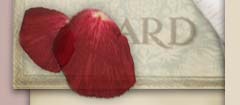Calgary Herald
B3 City & Region
Profile: War brides changed our way of life
David Bly, Calgary Herald
Life was about to undergo a huge change for the 943 passengers of the Mauretania II when it docked at Pier 21 in Halifax 60 years ago.
They were the wives and children of Canadian soldiers, sailors and airmen who had married while serving abroad.
While a few wives and children of Canadian servicemen had come to Canada during the Second World War, the arrival of the Mauretania on Feb. 9, 1946, marked the beginning of the mass migration that would bring come 48,000 war brides and 22,000 children to Canada.
It meant upheaval, adjustment and even trauma to the war brides, but the influx of these women, the vast majority of whom were British, also changed Canadian culture and society.
“You can imagine the effect of an infusion of nearly 50,000 women, 45,000 of them from Britain,” says Kathleen Scherf, dean of communication and culture at the University of Calgary.
“That helped anglify our culture right away…everything from recipes, how to treat kids, what you think of politics, finances, how you treat your husbands.
“They would have a large impact.”
She says today’s Canada would be vastly different if the war brides had been from another culture such as Muslim.
=========================
“It was a terrible culture clash” War Bride Hazel West On Arrival in Canada
=========================
When the war brides arrived, “immediately there was a huge cultural ramification and solidification of the British way of life, because we know in the home the women are the culture-makers,” says Scherf.
The war brides were not aware they were bringing cultural change with them – for most of them, the change seemed mostly one way.
“We virtually had to learn another language, even though we came form Britain,” says Hazel West of Taber.
She sailed from Britain on the Aquitania on April 24, 1946, to join her husband, Russell, who lived in Raymond, in southern Alberta.
“Everything was known by another name – stocking became hose, a bathing costume became a swimming suit,” she recalls.
A small prairie town was absolutely foreign to a 21-year-old Londoner, who loved to go to the theatre and the opera.
“It was a terrible culture clash,” says West.
Doreen Kamis, who came to Alberta in December 1946, is president of the Alberta War Brides Association as well as the local chapter.
She says many of the women were pioneers in their own right.
Like many who came to Alberta, she came to a home that had no electricity or running water.
Coming to Canada “was a big shock, especially if you were from a big city,” says Edna McDonald, who celebrated her 60th wedding anniversary on Valentine’s Day.
Her husband, Pat, stayed in the air force after the war, “so we lived in 21 different houses in 20 years,” says Edna.
Calgary artist Beverly Tosh, who has created a mixed-media exhibition on war brides, says many of the women were not prepared for life in Canada.
“So many came to outhouses, coal and wood stoves, a harsh climate,” Tosh says. “They couldn’t complain or someone would say, ‘If you don’t like it here, go back where you came from.’ ”
When Tosh’s portrait of her mother, a Canadian war bride who emigrated to New Zealand, ran on the front page of a New Zealand newspaper, it triggered an influx of mail and phone calls from war brides who wanted to tell Tosh their stories.
She began collecting their stories and painting portraits based on their wedding photos.
Her exhibit, entitled One-Way Passage, will be showing across the country, including at Pier 21 and in the National War Museum in 2007.
The war brides, almost to the person, are glad they came.
“I am so thankful that my family is here in Canada,” says West, now a grandmother and great-grandmother, “I look at them and see how successful they are. They’re all having marvellous opportunities in this country.”
Esther Elliott was one of about 25 war brides gathered for their monthly luncheon at the Kensington Legion on Valentine’s Day.
She landed at Pier 21 in July 1946, on her daughter’s third birthday.
She says she felt at home immediately.
“I like the wide open country. I really love it,” she says. “I’ve had a far better life here that I would have had in England.”
Scherf says the war brides had a significant impact on the country’s female culture “because we are some gutsy broads here in Canada.
“You had to be some gutsy woman to leave your family, pack up your children, go to a future with some man you barely know and build yourself a life.
“I admire them, and I’m not from that particular heritage.”
In his foreword to Ben Wicks’ Promise Me You’ll Take Care of My Daughter: The Remarkable War Brides of World War II, historian Pierre Berton called the immigration of war brides “one of the great and unheralded mass movements in recent history.”
“This country is the better for them,” Berton wrote.
DBLY@THEHERALD.CANWEST.COM



